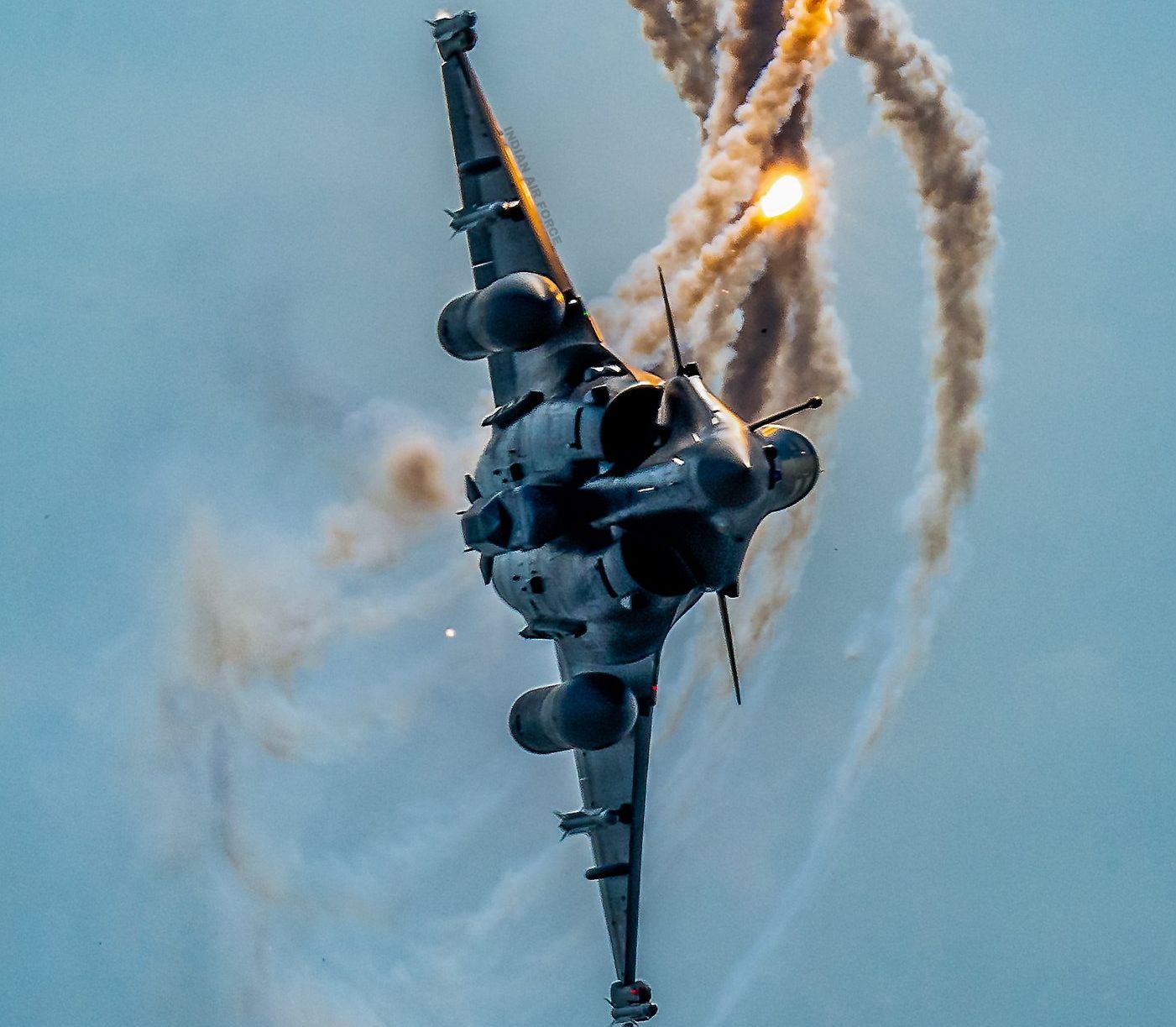An amendment recently tabled in the French National Assembly has revealed that Dassault Aviation is advancing work on the Rafale F5 variant aircraft, which can fly with a Loyal Wingman (drone).
Russian Sukhoi Su-35, China’s J-10 Fighters ‘Steal The Thunder’ At LIMA 2023 With Spectacular Aerobatic Display
The Ministry of Armed Forces tabled the amendment earlier this month to provide more information about the Rafale program’s upcoming efforts, particularly those related to the new F5 version that will be developed under the Military Planning Program (LPM) 2024-2030.
This revelation is significant because Europe’s next-generation fighter jet program, known as the Future Combat Aircraft System (FCAS), in which France is also a participant, is finally moving after being caught in the doldrums for a long time.
According to French media, Dassault Aviation had contemplated walking out of the arrangement and developing a French alternative (as Plan B) if the FCAS program failed to move past deadlocks.
At the time, as part of his media offensive, Dassault Chief Eric Trappier reportedly said he had a concept for a significant Rafale development, a sort of Super-Rafale that will work along with a medium combat drone of the Loyal Wingman type created using the nEUROn program’s technological advancements.
However, the FCAS program was later salvaged with partner countries France, Germany, and Spain working out their differences and signing a contract for the program’s research, development, and demonstration activities.
In March this year, the FCAS partners officially kickstarted the program’s crucial Phase 1B in an event held at the Air and Space Force Headquarters in Madrid.
Significant progress has been made on the FCAS program after a long period of deadlock that, at one point, signaled an inevitable French withdrawal. However, despite the investment and commitment to FCAS, the French haven’t relinquished the idea of developing and flying a Rafale fighter jet that will share some principles with the next-generation European aircraft.
The concept of the Rafale F-5, or the ‘Super Rafale,’ has been around for a while and made headlines as far back as 2021. French magazine Zone Militaire quoted Frédéric Parisot, Vice Chief of the French Air and Space Force, saying: “Dassault Aviation is set to bring an F5 standard of the existing aircraft, “endowed with an impressive number of capabilities.”
“At the start of the 2030s, the F5 standard will allow us to further improve the Rafale’s first entry capacity, with new sensors and armaments, but also capacities to communicate, collaborate and be interoperable,” the report noted.
However, this may be the first time an official French communication to its Parliament has revealed specific details about the program.
Rafale F5 & Its Cutting-Edge Capabilities
The amendment outlines some capabilities that will be developed as part of the Rafale F5 program, including significantly more processing power.
Most importantly, two new key capabilities are being introduced, namely, the Suppression of enemy anti-aircraft defenses (SEAD) on the one hand and the development of a combat drone presented as a “derivative” of technological advancements from the nEUROn program, which constitutes a first in official French communication.
It was admitted that it was now necessary to equip the Rafale in its future versions with the ability to suppress enemy anti-aircraft defenses, also known as SEAD, reported Meta Defense.
The report said the French decision could partly be based on Ukraine’s air warfare in the ongoing conflict, demonstrating the threat that modern anti-aircraft systems pose today for those who intend to achieve air superiority.
The report further says the SEAD capabilities will most likely be based on the development of new anti-radiation air-to-ground munitions capable of raising a radar beam to destroy anti-aircraft systems and their transmitter, as well as powerful jammers that will allow a Rafale to protect not only itself but also other allied aircraft operating in the area with inefficient electronic warfare system.

However, the most intriguing feature of the Rafale F5 is undoubtedly having a loyal wingman. “The Rafale F5 standard will be developed during this military programming law. It includes, in particular, the development of an accompanying drone for the Rafale, resulting from the work of the Neuron demonstrator,” according to Article 2 of the amendment.
Trappier added, “There may be small remote carriers, like for the Scaf or nEUROn-type drones. It’s almost a combat aircraft that operates in conjunction with the Rafale. I can’t say anything more.”
The nEUROn is a combat drone designed in the early 2000s. This UCAV (unmanned combat aircraft system) results from a partnership with five other countries (Sweden, Italy, Spain, Switzerland, and Greece). The demonstration of this stealth device was finalized in 2012.
This demonstrator drone aims to validate the development of sophisticated technologies that reflect all mission systems, including high-level flight control, stealth, the ability to fire actual air-to-ground missiles from an internal bay, integration with the C4I environment, cutting-edge industrial collaboration techniques, etc.
The loyal wingman concept is typically customary for next-generation fighter jet programs, including the Tempest and the US NGAD. However, the US is acquiring 1,000 Collaborative Combat Aircraft (CCA) drones paired with its fifth-generation F-35 and sixth-generation fighter jet.
The French-German-Spanish next-generation aircraft under the FCAS program will also sport a loyal wingman. In fact, in November last year, a new modular design for an armed “heavy loyal wingman” that will be used as part of the larger FCAS was showcased by Airbus at the International Fighter Conference 2022 (IFC 2022).
The use of a loyal wingman concept with the French ‘Super Rafale’ is thus, at the very least, intriguing and even more so because this is the first time that the concept has figured alongside the mention of Rafale in official French communication.
- Contact the author at sakshi.tiwari9555 (at) gmail.com
- Follow EurAsian Times on Google News




